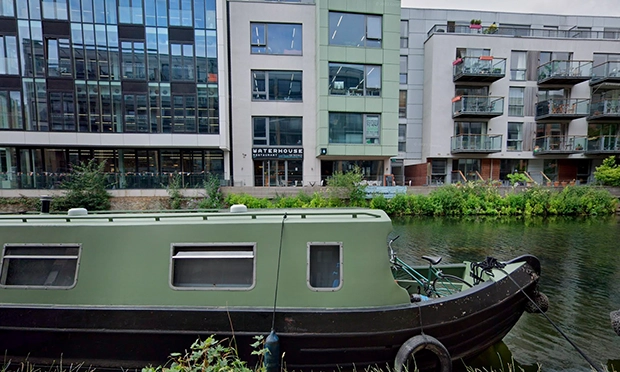The backlog of serious criminal cases in east London is now so large local crown court is installing new temporary holding cells.
The list of pending trials at Snaresbrook Crown Court, the only East London court able to hear the most serious cases, has doubled to 4,250 since the pandemic began.
To allow the court to hear more trials at once, the Ministry of Justice (MoJ) is now adding eleven temporary cells in prefabricated buildings that will be attached to the court’s annex building.
Unlike the main building, which is a grade II listed former orphanage, the annex is a building with a corrugated roof that was added in the late 1980s.
A barrister who practices regularly at Snaresbrook said the extra cells will help, as social distancing rules have caused “big issues” with capacity in both buildings.
They added: “But in terms of cell quality, especially in the annex, I know there have been severe problems with broken heating and freezing court rooms and cells throughout winter.
“On at least one occasion that I’ve been there in the last couple of months a trial was adjourned for a day because it was just too cold for the jury to concentrate. My clients have also regularly reported being absolutely freezing in the annex cells.”
Problems accommodating all of the prisoners awaiting trial at Snaresbrook have been reported since cases first resumed in the summer of 2020.
The barrister added: “I have no idea how long these things take to organise, but if this solution was possible (as it clearly was, now it’s happening), it’s very very surprising that it’s taken two years to sort it out.”
The MoJ did not respond to questions on why the needed temporary cells were not added sooner.
In its planning application, the MoJ is asking Redbridge Council to give permission for the temporary cells to stay in place for three years to manage the backlog in cases “that have resulted from the pandemic”.
However, figures obtained by the Local Democracy Reporting Service show that delayed justice was an issue at Snaresbrook before Covid limited court capacity.
Previously, the MoJ has been criticised for restricting how many days judges work in an attempt to save money, along with punishing cuts to other parts of the criminal justice system.
Trials being dealt with this week took an average of five months longer to get to court than they would have in late 2019.
The number of people being tried for a crime each year was 700 in 2014, when available statistics began, but by late 2019 this had dropped to 440.
Statistics also show the backlog of outstanding cases at Snaresbrook has fluctuated between 1,200 and 2,400 since 2014. In 2019 the number of outstanding cases rose from 1,200 to 1,900.
A Ministry of Justice spokesperson said: “We have put no limit on sitting days, which means crown courts like Snaresbrook can run at the maximum possible capacity.
“The extra cells mean more defendants on remand can face trial.”
https://www.guardian-series.co.uk/news/19984876.extra-holding-cells-planned-snaresbrook-crown-court/





